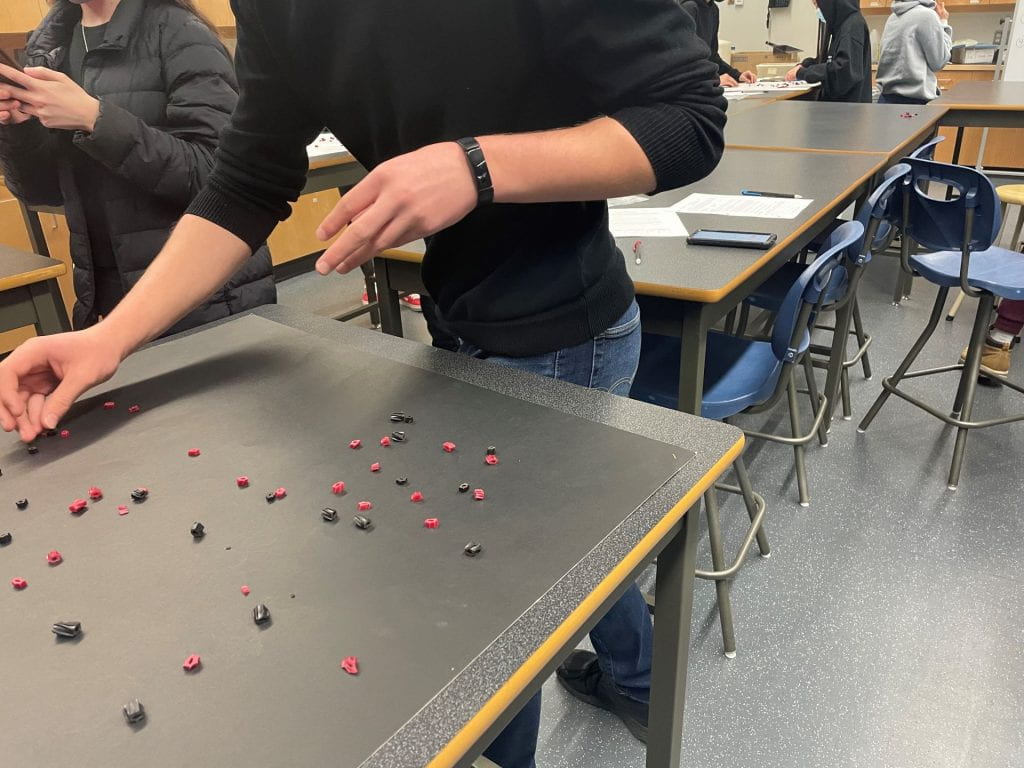
· I demonstrated that I can collect and analyze evidence when I recorded the amount of red and black prey (licorice) that survived my powerful, sharp talons in the Natural Selection Lab. I also demonstrated this core competency when I counted and recorded how full other competitors cups or “stomachs” were in the Feeding Frenzy Lab.
· I demonstrated that I can connect evidence I collected to big ideas when I used the data I recorded to make conclusions that the “prey” or licorice that matched the background colour were more likely to survive, while the licorice that didn’t had less of a chance to live. I also demonstrated this core competency when in the Feeding Frenzy lab I came to the conclusion that the spoon had the best genes to pick up 3/4 materials we had to collect. The spoon was the “fittest” and would be much more likely to have their genes passed on.
· I demonstrated that I can make predictions based on evidence when I predicted in the Feeding Frenzy Lab that since each island was geographically isolated, there would be new species created. I also was able to predict that certain feeding mechanisms would do better at certain stations, including predicting that a spoon would do much better at collecting sugar than chopsticks.
· I demonstrated that I can draw reasoned conclusions when I was able to connect the results of my Natural Selection Lab to Natural Selection. I was able to demonstrate how Darwin’s main points, Genetic Variation, Changes in the Environment, Struggle for Survival, and Over production of Offspring. I was able to understand Natural Selection better after the lab as it demonstrated adaptation in action and the benefits that it provides.
